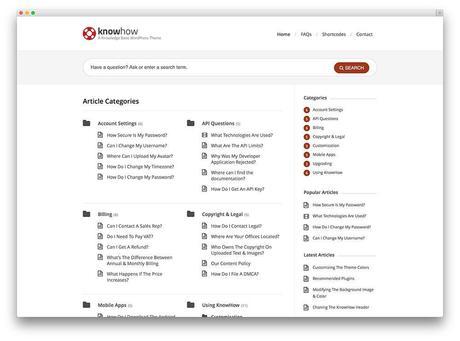
Don’t we all love it when a new customer signs up to do business with us? Of course, we do. It’s a reaffirmation of the fact that whatever it is that we are doing to build our business, is working. But, hold on; it’s not the time to celebrate yet. And here’s why: just because a new customer signed up for your product or services, does not mean that he/she is going to stick with you.
This is especially true for SaaS (Software as a Service) companies, where 40-60% of software users who open or log-in to an app once, never show up again (source). You see, for every business that deals with customers, there is this moment of truth: and it’s called customer onboarding. Most businesses need to strive to reach two critical milestones in the customer journey:
- When the customers first sign up for their product/services, and
- When they achieve their first “success” while using your product
The largest amount of “churn” is expected to happen between these two steps. This is where the possibility of your customer “getting lost” and giving up on you is the highest. This could be because they failed to figure out something, didn’t get the value they expected, or simply lost interest.
Customer onboarding is a crucial first stage in any customer experience. As they say, first impressions are usually the ones that last forever. Customer onboarding assumes even more important when you consider the fact that it’s easier and cheaper to retain a customer than it is to acquire one. About 94% of customers that experience a low-effort onboarding process are happy to buy from that same company again. There is every reason to ensure customer onboarding remains a top pick for businesses, including minimizing the initial churn.
When talking about customer onboarding, an important aspect that business need to contend with is the length and time needed for the onboarding process. This is something that can vary significantly depending on the business. For some businesses, the time taken to onboard a customer and to get them up and running might just take an hour’s worth of phone call. For others, it could take more than a month.
According to Chuck Linn, Owner/EVP – Speciality House of Creation, “The length of the onboarding process is really dependent on the business and its customers. There’s no true median number, and there’s no right or wrong answer to the question of how long.”
However, most companies can speed up their onboarding process with some simple changes, and one of those involves tweaking the company knowledge base.
-
Ensure that customers have easy access to the information they need
Having a self-serving knowledge base that documents answers to frequently asked questions is one of the most effective ways for customer onboarding. This is one of the fastest ways for customers to find answers as they interact with your products/services for the first time.
In fact, in a survey conducted by Coleman Parkes, an overwhelming 91% of the 3000 respondents agreed that they would prefer using an online knowledge “if it were available and tailored to their needs.” (source).
However, creating a knowledge base alone isn’t enough. It needs to be good. If that weren’t the case, more than 40% of customers would not have been contacting a call center after failing to find answers to their question via self-service. Also, it is estimated that up to 50% of the calls along the lines of “How do I …?” could be avoided by simply implementing better self-serving knowledge bases.
Companies looking to improve and speed up their onboarding via knowledge bases can do so by:
- Regularly updating their knowledge bases with new features, while taking care to remove any incorrect or obsolete info.
- Adding articles that answer the frequently asked questions on calls.
- Collecting feedback from knowledge base users on whether the article helped them with the query to their satisfaction or not.
-
Use the knowledge base to demonstrate the product
In theory, your customers are probably already aware of what your product does. That’s why they signed up for it in the first place. But do they actually know how to use it? Probably not, if they are using it for the first time. They need to be shown all the features, the bells and whistles that your product offers.It’s up to you to train your first-time users. The best way to go about doing this is by creating short videos that demonstrate the various features of the product step by step.
Care should be taken to record several short videos rather than a long one. The goal here is to point out one feature per video and explain clearly how to go about accomplishing a specific task with the feature. A problem-solution-benefit approach really works well here. Failing to highlight the purpose of your application means the customer may not see the benefit of using your product.
It’s important to understand that customer success depends on the ability of the person to use your application correctly. If the customers find it difficult to use, they may end up being frustrated and giving up on it altogether.
-
Include customer success stories and case studies.
What’s a great product without some wonderful customer stories to go with it? All new customers want to hear these success stories even if to reaffirm the fact that their decision to invest into your product was indeed a wide one. And of course, for those on the fence, it’s good to show them that your product does produce the desired results.You can use your knowledge base to include success stories or case studies that instil confidence in the users and inspire them to use your products by providing relatable human evidence of its value. This also an effective way to promote your brand and highlight the fact that your customers love your offerings.
According to Kristi Hines, freelance writer, blogger, and social media enthusiast:
“Case studies are a great way to tell the world how valuable your products or services are. They go beyond simple testimonials by showing real-life examples of how you were able to satisfy your customers’ needs and help them accomplish their goals.” (source)
Conclusion
Ready to optimize and speed up your onboarding experience via your knowledge base? I hope this article provides with you some additional tips to implement the same. Let us know how it works out for you as well as any tips that you might have yourself.

